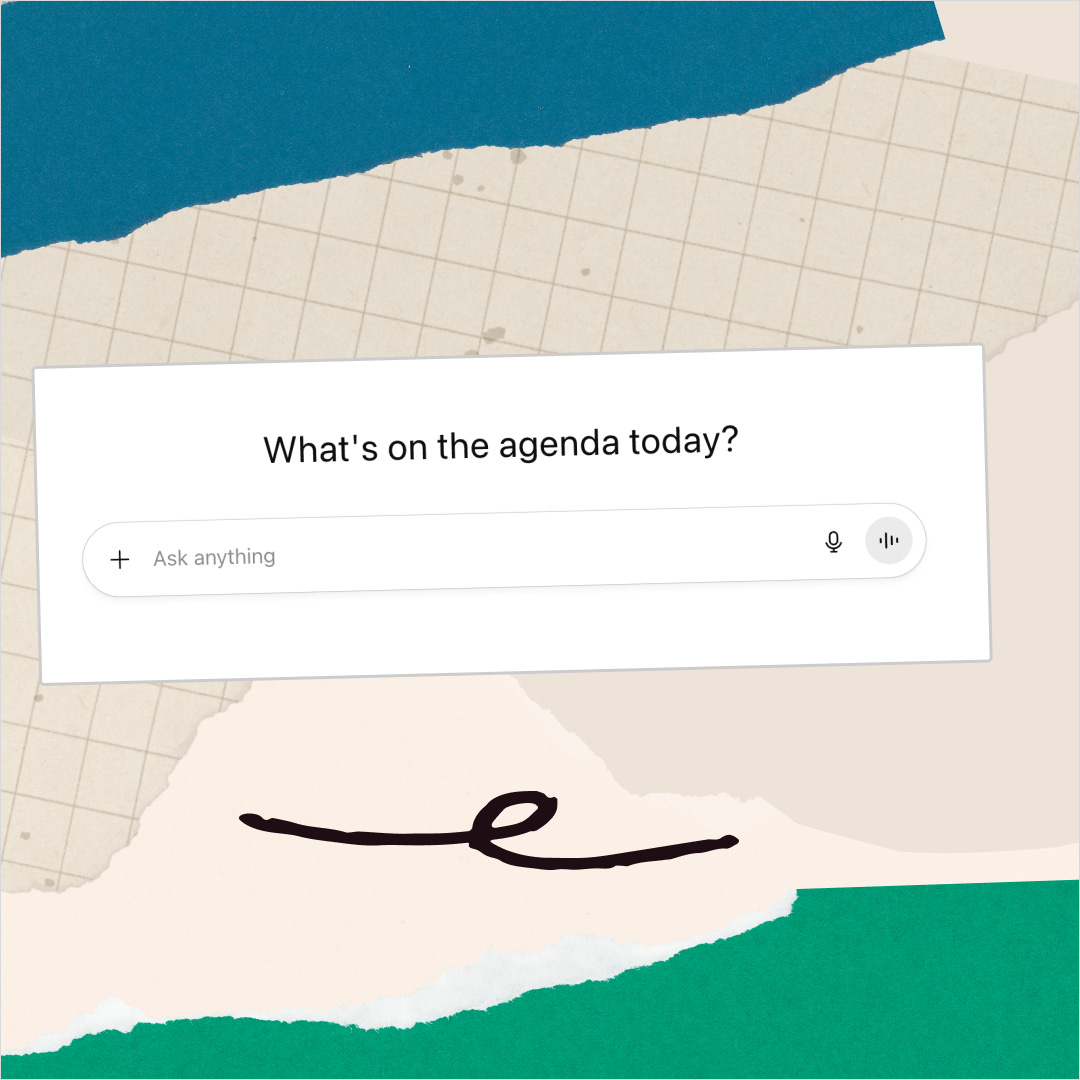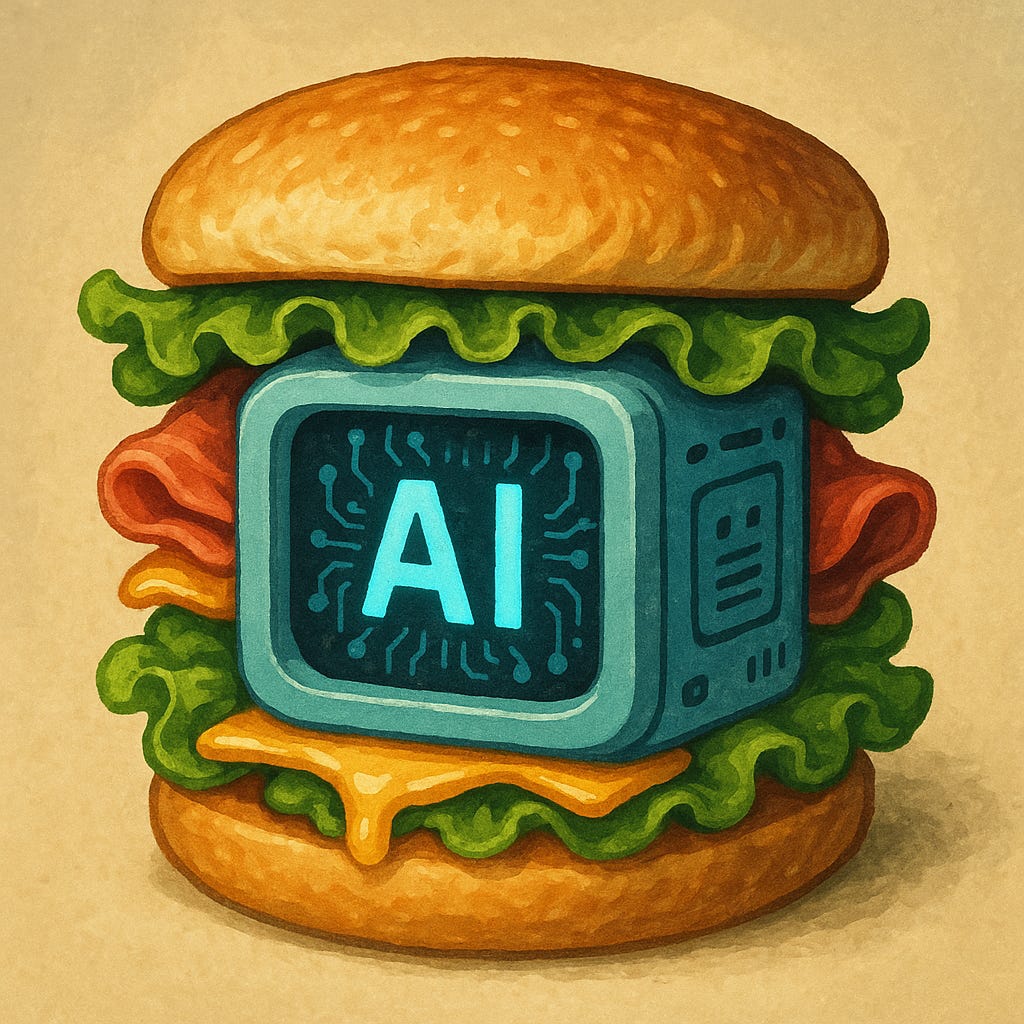Steal these AI prompts
Actually helpful AI prompts to help you work smarter, not harder
Hi there! You’re reading the Bonfire newsletter from Kevan Lee & Shannon Deep. Each week, we highlight brand, marketing, and creative learnings from our experience as in-house marketers turned agency owners who think a lot about creativity, our relationship to work, and how all of that impacts our identities. We’ll also feature insights from our digital community of super smart folks (which you’re welcome to join).
We are hosting an AI potluck this Wednesday, and we’d love for you to join! Come learn more of our most effective AI prompts and hear from the community about new workflows, fresh ideas, and hot AI takes. RSVP at the link above to reserve your spot.
AI prompt engineering to work smarter, not harder
We are being asked to use AI more at work, sold a narrative that not being on the cusp of AI means being left behind or left out or left for dead (aka jobless) by the capitalism efficiency machine. Maybe this is the perpetual march of progress; like spellcheck was to word processors so AI will be to Googling. Or maybe this is something more sinister and snake-oily. (If you want to read some good books about it, I’d recommend Co-Intelligence and Empire of AI.)
Either way, the bosses aren’t asking us for any less AI any time soon.
We’ve given some advice on how to navigate this new marketing environment, whether it’s leaning in to learn more about AI or leaning out to go and do your own thing (free from social media constructs, ideally, while we’re dreamcasting).
Today, we wanted to equip you with a few different AI prompts that you can put into practice now, whether on the job or on your own. Remember: AI is just technology, the most robust autocomplete in computing history, and technology exists to make our lives easier. So, here’s to an easier life for all of us!
Note: I am far from an AI expert, and we are not dyed-in-the-wool AI ambassadors here at Bonfire either. In fact, we have a complicated relationship with AI. But we do read about it a lot and have tried a handful of things to see what fits. YMMV. Ours certainly has!
Note #2: All the prompts in this list can be used on any AI tool. We most often use ChatGPT, but feel free to apply these to Perplexity, Claude, Gemini, etc.
1 - Meta prompting
Though it might seem ridiculously circular, one of the best ways to discover your best prompts is to ask the AI for the prompt.
<at the end of a conversation where you’re happy with the results>
“What prompt would have got me to this final response in the first place?”
Obviously you’ll need to use the AI organically in a conversation before landing on an answer that is satisfactory to you. But then comes the reverse-engineering. Ask your AI what prompt would have got you to this response initially, and ideally you’ll find a shortcut to saving you loads of time the next time you need a similar result.
Good for:
Market research and discovery
Templatized work that is repeatable: briefs, agendas, follow-ups, recaps, etc.
2 - Prompting basics: Where to begin
For anyone new to prompting, the absolute best place to start is with these few golden rules that everyone—beginners all the way to experts—use:
Tell your AI who it is: an archetype or an area of expertise or a literal job title
Tell your AI how you want the task done: e.g., voice/tone, length of response, number of options
Provide examples of what good looks like, if possible: links or copy/paste examples work great
You will get far better responses if you narrow the focus of the genAI tool, and the best way to do that is to give it clear instructions up front. I fail at this often; it’s easier and quicker to just ask ChatGPT the random question in my head than it is to instruct ChatGPT to be a subject matter expert who gives concise answers.
But when you’re wanting to get some really, really strong output from your AI friend, it’s best to be specific. For example:
You are a world-class copywriter. Your mission is to craft succinct and engaging ad copy for a [type of project]. This ad copy must quickly grab attention while being clear and to the point, as our readers often decide in a glance. Write in an inclusive and engaging style, using first-person plural pronouns ('we') to build a sense of collective action and belonging. The target audience for this copy is [describe audience here].
This type of prompting is good in pretty much every use case. Specifically it can be helpful to think of your AI bot as helping you in one of three ways:
“You are my assistant” in order to outsource menial work to the AI
“You are a strategist” in order to provide second opinions and play devil’s advocate to round out your ideas
“You are a creator” in order to make draft versions of your concepts and ideas (see the AI sandwich prompt further below)
3 - Teach it your voice and tone
In one of our favorite Campout events of the year, we got to learn from writer and comms expert Meg Moore about how she builds voice and tone models to create original, authentic content on behalf of her clients.
Her voice and tone exercise is illuminating, whether you’re doing it on behalf of a client or doing it for yourself. Through Meg’s process, you identify the types of content you aspire to create, you build conviction around the voice values that make you sound like you, then you build the AI prompts and GPTs to draft copy in your voice.
At the most basic, once you know your voice and tone attributes, you can put them into any AI prompt where you’re asking for content.
I am the CEO of a medium-sized company. Write a short email that is humorous yet professional to my VP of marketing. Ask them to: - send me an up-to-date list of our recent growth progress - organize a meeting this week with them and the content team - let me know how the new branding is being received in the market
To take it one step further, you can build this voice and tone into a custom GPT that remembers your attributes so that you don’t have to prompt it anew every time. I am most certainly not qualified to explain how to build custom GPT models, but I am capable of linking to some tutorials that I’ve used to build a few Bonfire GPTs of our own: ChatGPT’s tutorial, helpful video tutorial, Reddit’s best tutorial on building GPTs, and this overview from GPT builder Adam Mico. Note that GPTs are often an exclusive feature on paid plans for the AI platforms.
Good for:
Social media posts
Email drafts
First drafts of newsletter content
4 - Ask your AI to take its time
If only I could give myself the same advice!
As a recovering hurrier, I feel like genAI platforms and I have a lot in common: We want to give people the right answer as fast as possible. Unfortunately, this can sometimes lead to rushed answers and made-up information (in the case of the AI; never me!).
So I’ll often amend my prompts with a simple tag:
<initial ask>
“Take your time.”
Or, if I’m feeling particularly dubious about the AI’s hustle mindset.
<initial ask>
“Take your time. I am not in a hurry. It is more important to me that you get it right than that you get it done fast.”
Good for:
Long and drawn out research requests
Summaries of long reports or videos or audio
Listicles of top tools, top competitors, etc.
5 - The AI sandwich
You might be wondering, since we have so many AI tips and tricks to share, whether we use them to more or less craft the entirety of our newsletters. We don’t!
When it comes to crafting the Bonfire newsletter, we still write the majority of it ourselves. Same thing when it comes to client work. We believe that there is still no AI replacement for brand strategy, editorial vision, and—to be frank—taste.
But where AI can come in handy is in our version of an AI sandwich:
We start with an idea, a direction, a concept, or a draft, conceived by us humans.
Then we hand off to AI to give us an outline, riff on more options, or propose a basic draft.
Then we human-edit the AI content so that it is accurate, authentic, and true to our original vision.
Our sandwich is:
Human
AI
Human
6 - Fill-in-the-blanks
It wasn’t until recently that I learned the meaning of the copy editing shorthand of TKTKTK. It is placeholder gibberish meant to be easily find-and-replaceable since no words in the English language have these two letters beside each other. (Some folks have also told me that it’s an abbreviation for “To Kome,” a misspelled version of “to come.”)
I’ll often write longform drafts quickly, leaving some of the trickier spots—where additional research is required, or the phrasing is stumping me—marked with TKTK.
Then I’ll share the draft with AI and prompt it accordingly:
<copy/paste my draft>
Read through this draft and help me fill in the placeholder content. Keep it consistent with the tone of the rest of the content, and do not re-write anything else.
(AI loves to re-write my stuff.)
Good for:
Memo writing
Blog post writing
Briefs and emails
Over to you
What are your go-to AI prompts? What are some tips you use, big or small, to get the most out of AI and make your life just a little easier? We’d love to hear them!
And we’d love to have you join us on Wednesday for our AI potluck where you can hear more from us and more from others on exactly how we get stuff done with AI.
Want more like this? Join us in Campout.
In Campout, our digital community, we talk about stuff like this on the daily in our channels and a couple times a month in our live events. All supported by exercises and templates to help you craft a career with purpose and intention.
This week, we have our AI potluck on Wednesday, and we’d love for you to be there! We’ll share more of our favorite AI tips and tricks, and you can bring a prompt to share, too. Also, commiserating about the state of AI and marketing jobs is also very much allowed!
But wait! There’s more…
Wanna be friends?
If you love this newsletter and wish it were more interactive, you’re in luck! Join us over in Campout, our digital community for creative marketers and the creative curious.
Wanna work with us?
If you need help with brand strategy and storytelling, fractional brand and marketing leadership, and bringing your brand strategy to life in impactful ways, send us an email at hello@aroundthebonfire.com to get in touch.
As always, you can find us on LinkedIn, Instagram, and Threads.






